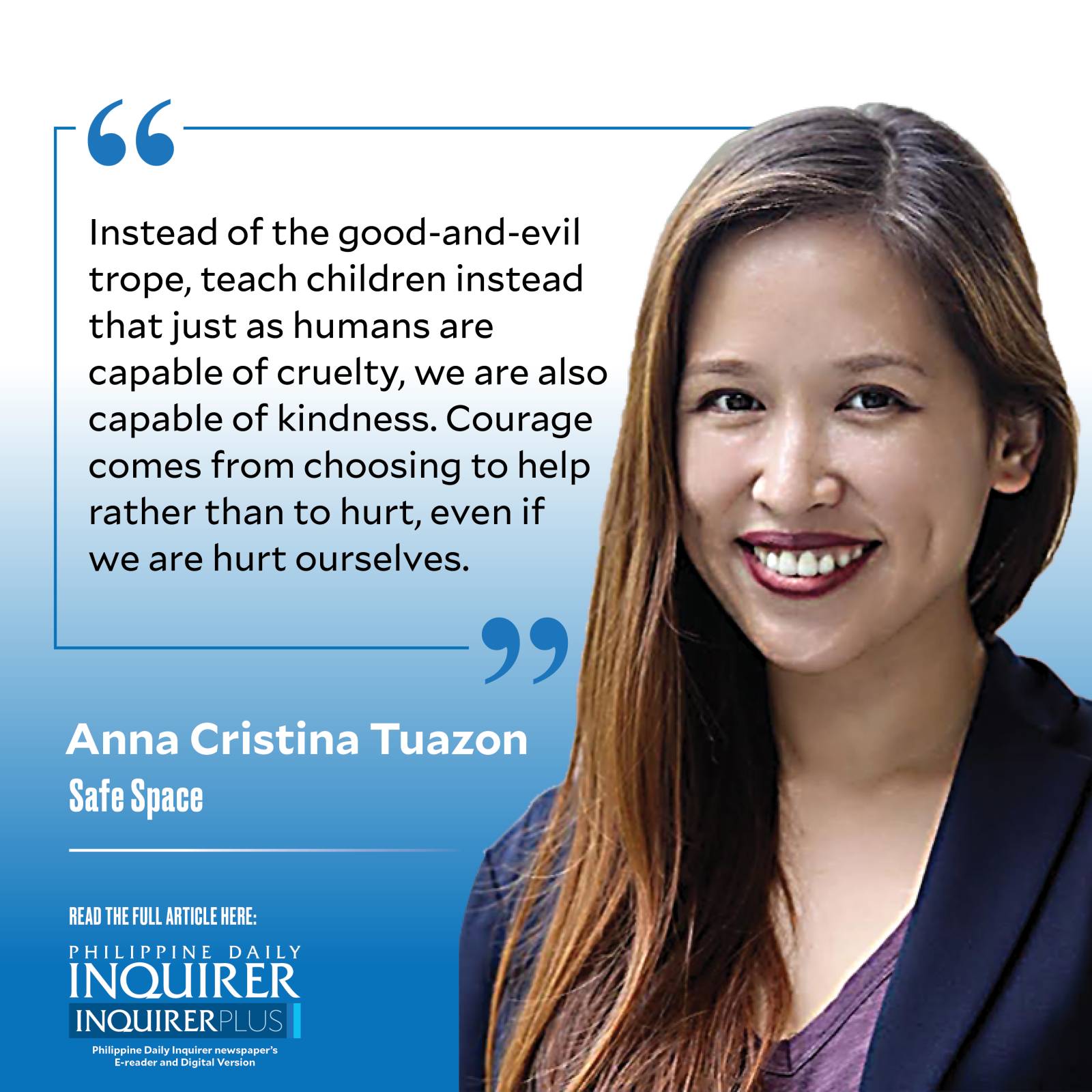Explaining conflict to children

How do we explain what is going on in the world to our children?
Traditional wisdom has been about keeping children away from adult problems and conversations: Do not tell them about the bad things in this world. Keep children out of it. Protect their innocence for as long as we can. However, is this even possible? In this day and age of online news and social media, children are much more updated than we think. They know what is happening in Gaza. They know about the hostilities in the West Philippine Sea. They are very much aware of rampant corruption in our country.
If we cannot shield them from unpleasant realities altogether, how then do we begin to explain something as complex as the Israeli-Palestinian conflict, for example? How much do children need to know about suffering and cruelty?
One thing we first need to accept is that children ask questions. And this should be a welcome thing. Asking questions means that they are curious about the world and that they want to learn more. We should encourage questions rather than shut them down. Oftentimes, it is the parents’ own discomfort and unease that prevents such a conversation. A child can sense this easily and will learn to avoid certain issues so as to protect the parent. Eventually, the child learns to ask their questions elsewhere and not turn to their parents for guidance. As parents, we need to make sure we are protecting them and not the other way around. This requires that we get comfortable with being uncomfortable. We also need to redefine what it means to protect our children—not necessarily to shield them from reality but to arm them with information that can help them make valued choices in life.
The next thing we need to accept is that children will understandably get upset when they hear about the suffering of others. I had a parent ask me why their child was so upset about an issue that was happening on the other side of the world. This is their empathy emerging. Do not stifle this development. The world can do with a lot more empathy. Lack of empathy leads to cruelty and causes more suffering. Make space for their emotions as they learn about wars and conflicts. It is okay to cry. It is okay to get angry. It is okay to get scared. If children can see that you can handle their emotions, they will learn not to get scared of their own feelings. Only then can they learn to regulate these emotions and channel them toward prosocial action.
We always say to give “age-appropriate” responses, but what does this look like? It simply means to explain things in a way that they can understand. It does not mean reducing things to black and white. For example, you would be surprised at how easily children can understand nuances of gender and sexuality; it is usually the parents who have a hard time accepting gender diversity due to the rigidness of their prior religious beliefs. When explaining horrific conflicts, do not get tempted to label people or nations as simply good or evil. This encourages othering and dehumanization. All humans are capable of good and evil acts. This might be the most frightening truth of all—life would be easier if we could single out evil people and keep them away from us. This dichotomy, however, is dangerous. Because once we label someone as evil, it justifies our own evil acts against them. Worse, we do not even recognize our own wickedness and mislabel it as righteous justice. Instead of the good-and-evil trope, teach children instead that just as humans are capable of cruelty, we are also capable of kindness. Courage comes from choosing to help rather than to hurt, even if we are hurt ourselves.
Some people think that justice is about meting out punishments to people who deserve them. This only pertains to one type of justice: retributive justice. Let us teach our children (and ourselves) about the other form of justice—restorative justice. This is the kind of justice with the potential to heal all parties. This is where we recognize that retribution only perpetuates the cycle of violence and that the only way to stop violence is to stop being violent. Restorative justice, as the name implies, focuses on restoration and rebuilding. It focuses on doing away with unjust policies that corner people toward desperate violence and crafting a society that is truly fair for all. This is obviously the more challenging route but it is the only path toward peace.
If all this still sounds difficult to explain to our children, then simply be honest with them. Do not be afraid to admit when we do not know or understand something ourselves. Let us help them sit with not knowing the answers. Assure them that while we may not know exactly why bad things happen, we can grieve together, learn more together, and act toward justice together.
—————-
aatuazon@up.edu.ph




















